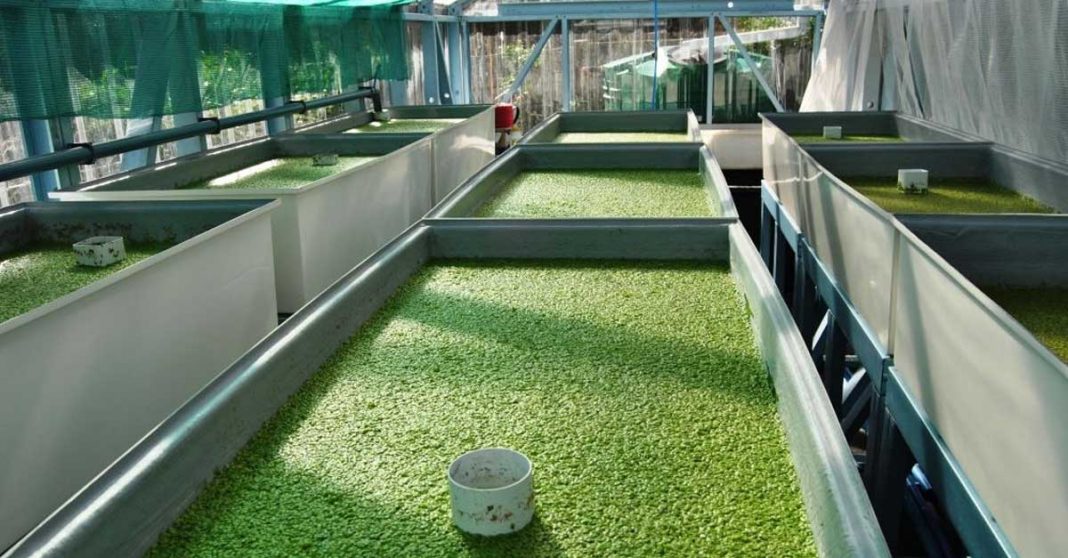Duckweed, locally known as “Phuck Nae” is not new to many people in Laos where it is consumed as a food supplement. What people might not be aware of is, however, is that it has global commercial value.
Duckweed is a species of plant with small round leaves floating on the surface of the water. For many, it is a plant that is commonly present in garden ponds.
It is a high protein food with a protein percentage ranging from 25 and 45 percent, which is considered better than that from Soybean meal, which contains only 36 percent protein content.
Thanks to its high protein content, it is widely used in the animal feed industry, in aquaculture, and has become an emerging food product for humans. After all, as per its name, it is good enough for ducks.
Alternative protein market
The global alternative protein market is expected to grow at a compound annual growth rate of 9.5 percent from 2019 to reach USD 17.9 billion by 2025, while in terms of volume, the market is also expected to see 5.2 percent of the annual growth from 2019, according to Dublin-based research firm Research and Markets.
The firm classified duckweed as an “emerging alternative protein” along with insect, algae, and lab meat.
It said, in particular, the plant-based protein products market commanded the largest share of the global market.
North America commanded the largest share of the global alternative protein market, followed by Europe and Asia-Pacific, the firm said.
The research firm cited concerns over animal products and protein, an increasing vegan population, growing preference to meat alternatives, and technological advancements in the food industry as main factors to contribute to the growth of the market, and the trend is expected to continue.
What does this mean to Laos?
Farming duckweed is one of the best ways to promote integrated farming systems in developing countries where the cost of food production in a country is highly dependant on fuel prices. Laos is not an exception, according to the Food and Agriculture Organization (FAO).
Integrated farming is a whole-farm management system which aims to deliver more sustainable agriculture. It combines the best of modern tools and technologies with traditional practices according to a given site and situation.
The FAO said that integrated farming systems in the long term have major advantages that can improve both the overall production of land without losing sustainability in developing countries.
This is because the two important agricultural cost factors that will be affected most are, mechanization, where fuel is directly consumed in crop farming, and fertilizer availability and application since the cost of nutrient requirements is highly related to gasoline prices, and integrated farming helps farmers reduce dependence on fuel, according to FAO.
In addition, one of the major constraints to the establishment of integrated farming systems is the level of management that must be exerted by small-scale farmers, and this can often be beyond their presently developed skills, FAO said.
However, an exception was observed in Vietnam and Bangladesh where the collection of all animal and human wastes into ponds and the subsequent growth of duckweed had proven to be relatively free of problems and is very skilfully managed by a number of cooperating farmers.
Apart from maintaining the fertility of the land, integrated and sustainable systems are ideal to potentially increase the income and standard of living of the farmer, the FAO noted.



